Oil and gas workers join Iran's intensifying labor protests

As labor protests in Iran gain momentum, oil and gas workers have joined the movement, underscoring the deepening concerns over economic and working conditions across the country.

As labor protests in Iran gain momentum, oil and gas workers have joined the movement, underscoring the deepening concerns over economic and working conditions across the country.
The staff at the refineries of the South Pars Gas Complex (SPGC) organized a protest gathering on Tuesday, driven by economic grievances and the incomplete payment of wages, as they sought to address and pursue their demands.
On Monday, permanent employees of the Pars Oil and Gas Company (POGC), a National Iranian Oil Company (NIOC) subsidiary, staged a protest march in Asaluyeh, Bushehr Province, calling attention to the growing turmoil in Iran's key industries. Simultaneously, workers at the Kangan Cement Factory, also in southern Iran, continued their strike, now in its 28th day, demanding accountability from the authorities.
The striking workers at Kangan Cement have outlined several demands, including the permanent employment of contract workers, the implementation of a comprehensive job classification plan, and increased vacation days. Despite their prolonged efforts, these demands have yet to be addressed, leading to continued protest actions.
Additionally, the Council for Organizing Oil Contract Workers' Protests has been actively sharing images and reports of various protest actions within the oil and gas sector on social media, indicating a coordinated effort among labor groups. The council noted that similar actions were undertaken by Parsian Oil and Gas Holding and Fajr Jam Gas Refinery in southern Iran.
The group has outlined a series of critical demands, including the “dismissal of incompetent and corrupt officials, the removal of wage ceilings, the elimination of retirement pension restrictions, and a comprehensive revision of the Retirement Fund's regulations.”
The requests illustrated the profound and systemic issues within the oil and gas sectors, which are pivotal to Iran’s economy.
Earlier, workers overseeing drilling operations in the southern oilfields also held protests.
Workers in Iran have consistently protested against deteriorating economic conditions and inadequate wage policies, as well as late payments of salaries. However, despite the frequency of these protests in recent years, their demands have largely been ignored.
A report by the US-based Human Rights Activists News Agency (HRANA) in April revealed that between April 2023 and April 2024, there were 428 reported labor protests.
Amidst these challenges, Iran's summer power crisis—which reduced electricity supply to industries by half and caused widespread blackouts—has now given rise to urgent warnings of an impending severe gas shortage this winter.
The strikes are not confined to southern Iran; a wave of protests has swept across the country, with Iranian nurses taking to the streets to demand better working conditions, fair pay, and respect for their profession.
These demonstrations, which began on August 5, have escalated into widespread strikes. The nurses’ demands are clear and urgent: an immediate wage increase, the elimination of mandatory overtime, proper and timely implementation of nursing tariffs, payment of overdue wages, improvement of harsh working conditions, and an end to security crackdowns on protesting nurses. These demands extend beyond financial compensation; they seek recognition of the critical role that nurses play in Iran’s healthcare system.
However, the Iranian government faces a significant budget deficit, estimated to exceed 50%, making it challenging to meet the nurses' demands. Similar grievances exist in other sectors, where most workers are struggling to survive on approximately $200 per month.
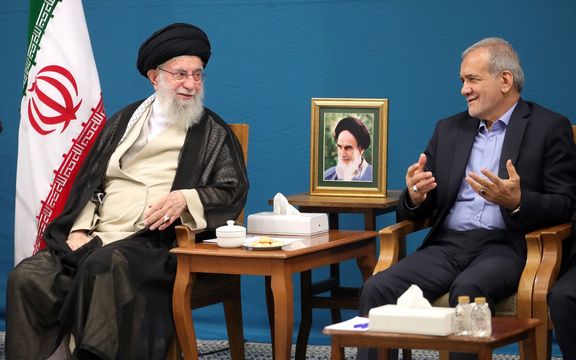
In his characteristic ambiguous style, Supreme Leader Ali Khamenei hinted at a willingness to "cooperate" with the West while warning the government about the dangers of placing trust in them.
“Let us not place our hopes in the enemy, nor should we await their approval for our plans. This does not preclude engaging with them when necessary—there’s no harm. However, do not rely on them, and trust in the enemy is misplaced," Khamenei said on Tuesday.
In his first meeting with President Masoud Pezeshkian's cabinet, Khamenei fueled speculation of a possible shift toward a softer foreign policy, though not without his trademark dose of skepticism.
"No plan is without its challenges," he remarked. "For some, the instinctive response to obstacles is a retreat, but this is a flawed approach. Instead, one must either overcome the hurdle or find a way to circumvent it. While there may be times when a tactical retreat becomes necessary after all avenues have been explored, it is crucial not to abandon one's position or resolve at the first sign of difficulty," Khamenei added.
Since Masoud Pezeshkian's election, murmurs of dialogue with the West have grown, signaling a potential shift toward negotiations on nuclear issues. While Tehran's rhetoric fluctuates, it remains steadfast on red lines like terrorism sponsorship. How they intend to lift crippling sanctions while maintaining these positions is yet to be seen.
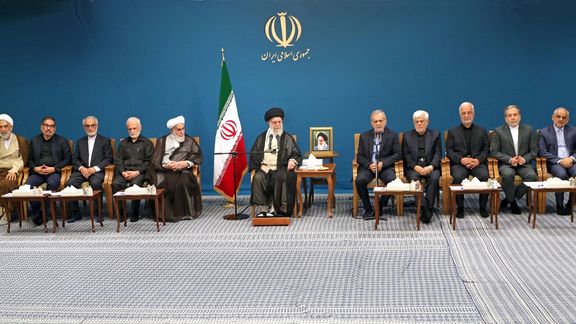
Two weeks ago, Khamenei had adopted a more aggressive yet still ambiguous tone. He condemned the "enemy’s psychological warfare" intended to dissuade Iran and warned that any retreat—whether military, political, or economic—that lacks “tactical prudence” would invite "divine wrath," as cautioned in the Holy Quran.
At Tuesday’s meeting, Khamenei also confirmed he had vetted the ministers well before their parliamentary approval.
"The President sought my counsel in selecting the ministers. I endorsed several, emphasized the importance of others, and remained neutral on many whom I was unfamiliar with," Khamenei said on Tuesday.
Last week, in his final address before the cabinet vote, Pezeshkian revealed that Khamenei approved every minister and personally persuaded at least one hesitant candidate to step up.
In the first meeting of the new cabinet, Khamenei confirmed the claim but with a nuanced twist, noting that while he had reviewed the list, he was unfamiliar with many of the nominees—this subtle remark left room for future maneuvering, a hallmark of Khamenei’s strategic ambiguity.
Historically, it has been understood that Khamenei plays a decisive role in selecting key ministers—specifically those of Intelligence, Interior, Defense, and Foreign Affairs. Yet, no sitting president had previously admitted to such direct pre-approval.
Pezeshkian’s openness, paired with Khamenei’s carefully measured response, has led to renewed scrutiny of the system's democratic pretensions. Some reformist observers speculate that Pezeshkian might be laying the groundwork to shift blame to Khamenei if his administration falters. However, Khamenei has never shied away from disowning those he's endorsed—most notably former President Mahmoud Ahmadinejad, whom Khamenei staunchly defended in the face of the 2009 protests, despite widespread allegations of electoral fraud.
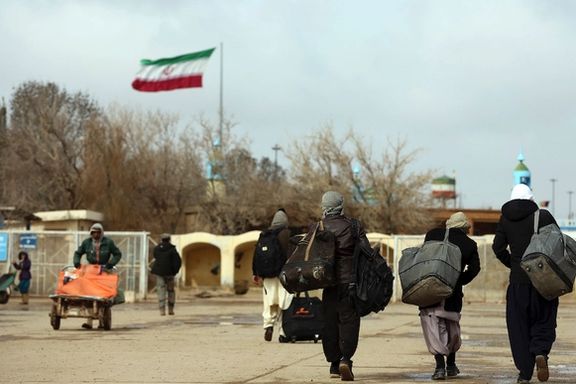
As Iran's government claims to be deporting more Afghan migrants, new details have emerged about a plan to charge large sums from those trying to remain in the country.
A recent report from the Tehran-based pro-reform newspaper Ham-Mihan revealed that Afghans must now purchase an expensive smart card to stay in Iran—a card that costs one billion rials (nearly $1,700).
This requirement comes at a time when Afghan immigration has surged, with estimates suggesting that up to 10,000 Afghans enter Iran daily, swelling the Afghan population in the country to as high as 10 million, or more than 10% of the population.
A backlash against Afghans has intensified on social media, with many Iranians complaining about the economic and social cost of hosting so many migrants amid Iran's own economic crisis, dwindling public services and joblessness.
Ham-Mihan quoted Arefeh, an Afghan woman who moved to Iran six years ago with her husband, describing the ordeal they faced when attempting to renew their Afghan passports. "We were told we needed to purchase a smart card to stay in Iran," Arefeh recounted. "The smart card, however, costs one billion rials." This card is now mandatory for the head of the family and any male child over 18 to remain and work in Iran. According to the report, authorities no longer accept census papers, passports, or residency cards, making the smart card the only option for legal residency.
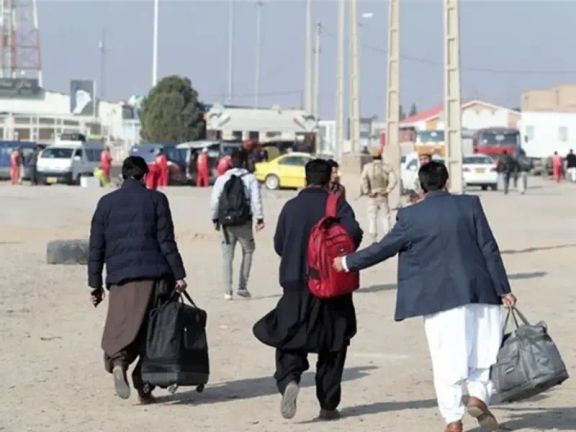
This policy, adopted in June of last year, is widely seen as a money-making scheme by the Iranian government. Issued by the Ministry of Foreign Affairs through the Bureau for Aliens and Foreign Immigrants Affairs, the smart cards have become part of what some are calling the "One billion rial investment plan," a label that underscores the financial burden on Afghan migrants. With millions of Afghans in the country, if the government collects this fee solely from the head of each family, Iran stands to rake in billions of dollars through this scheme, exploiting one of the world's most vulnerable populations for financial gain.
The timing of this new policy coincides with a marked increase in the deportation of Afghan migrants, which has intensified this summer. In mid-August, the governor of Shahriar County in Tehran Province announced a "swift operation to round up illegal migrants," targeting undocumented Afghans. Local official Alireza Fatehi-Nejad emphasized the challenges posed by undocumented Afghans, citing legal issues and the strain on public resources.

This operation, coordinated by multiple government agencies, has led to the forced repatriation of many Afghans. However, reports indicate that despite being deported, many Afghans return to Iran due to the dire conditions in Afghanistan and the fact that their families remain in the country. This cycle of deportation and return highlights the persistent challenges Afghan migrants face in Iran.
Eskandar Momeni, Iran’s new Interior Minister, said Monday that “One of my main priorities… is the issue of foreign nationals. We will present a bill for the establishment of the National Migration Organization to the Parliament…, and we will begin the work.”
In response to a question regarding the Border Guard Commander announcing that undocumented foreign nationals must leave Iran by March 2025, Momeni said “This matter is also in progress, and we are following up on it.”
The situation has sparked outrage among activists and intellectuals within Iran. In October, over 540 artists, lawyers, doctors, journalists, and civil society activists called for an end to the "mistreatment" of Afghan migrants. The deportation of over 20,000 Afghan children, many of whom were unaccompanied, has further fueled criticism.
There are no precise figures on the number of Afghans living in Iran, but estimates range between 5 to 8 million, with some suggesting the number could be as high as 15 million, raising questions about the government's motives. Critics accuse the Islamic Republic of pursuing an "open border" policy, allowing thousands of Afghans to enter illegally each day. This influx has led to widespread speculation about the government's hidden agenda.
Many Iranians believe the Islamic Republic actively encourages mass Afghan migration for several reasons. Some argue that as a large segment of the population has distanced itself from religion, the authorities are trying to alter the country's demographic makeup, so that the clerical rulers can tighten their grip on power.
A user on X shared a photo of Afghans climbing over a wall at the Iranian border, commenting that despite spending three billion euros on building and completing this wall to stop Afghan entry, the border closure now feels like a joke.
Others suggest that the government views the Afghan population as a strategic asset. Supreme Leader Ali Khamenei has long sought to increase the population in line with Shia ideology, but economic hardships and lifestyle choices have led many Iranians to forgo having large families. In this context, the presence of Afghans serves Khamenei's goal of population growth.
Moreover, Afghans, often desperate for work, are seen as prime recruits for the IRGC’s overseas operations in Syria and Lebanon. By fostering resentment towards Afghan migrants, the government deflects public anger away from itself and towards a scapegoat, further entrenching its power.
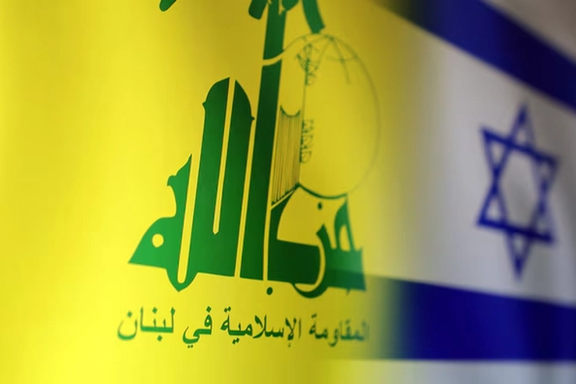
Israel and Hezbollah have stepped back from a regional war—for now. While daily rocket barrages persist along the Israel-Lebanon border, no clear winners have emerged, and the situation remains fragile and uncertain.
It was August 25 around 4:30 in the morning when Sarit Zehavi heard loud explosions.
"Literally the ground was shaking."
She didn't know what was happening.
"The blasts were truly something that we have never heard in the past."
It was the IDF launching preemptive air strikes in Southern Lebanon to thwart a major attack after Israeli intelligence gathered information on the incoming threat, according to IDF officials.
Israel prevented Hezbollah's full response to the killing of its Chief of Staff Fuad Shukr on July 30 from materializing.
Iran's proxy was meant to reportedly carry out hundreds of rockets and UAV strikes in Israel, while also firing accurate missiles at security targets near Tel Aviv. It was described as a large-scale ariel attack by Hezbollah, according to the IDF.
Sarit Zehavi specialized in the IDF's military intelligence and now runs an organization researching and analyzing Israel's security challenges in the North, but above all she is an Israeli Northern citizen herself, who lives with Hezbollah just 9 kilometers from her doorstep.
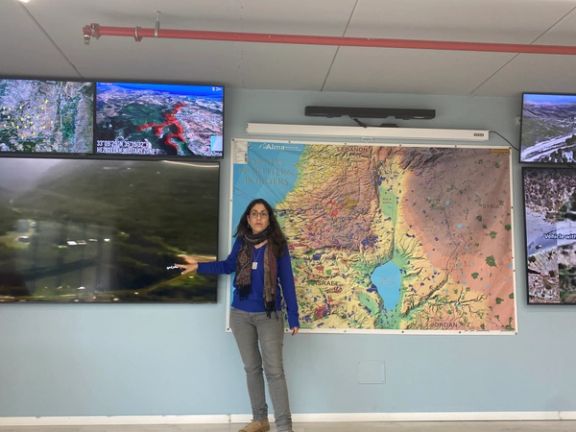
This is her reality. Since October 7, there have been daily attacks in the North and more than 60 thousand Northern Israeli residents are refugees in their own country.
And that also affects the economy with thousands of Northerners not at work, and those who remain, risking their lives to cultivate the fields and farm. The ongoing war against Hamas has tested Israel's economy, and opening up a second front with Hezbollah could cripple it.
"All of us civilians of the North that morning ran to the bomb shelters, including myself and my family. It just didn't stop for about more than an hour. Since this war started, I was very much afraid of a scenario of fire to all over the borderline, because I was afraid that with this scenario, we will see an infiltration as well," said Zehavi.
There has been a weekly average of 60 Hezbollah attacks in the North since the start of the war 10 months ago, which amounts to 2,804 attacks so far, according to Zehavi.
Hezbollah and its allies have been threatening a retaliatory attack since the assassination of Shukr, which Israel claimed responsibility for. The Iran-backed Hezbollah said in a statement that this “first phase” of retaliation was “successfully completed”.
Nasrallah made a televised speech after the heavy exchange of fire. In it, he said the main focus of Hezbollah’s attack was the Glilot base north of Tel Aviv, which is home to the Mossad and the military intelligence group Unit 8200.
![Hezbollah leader Hassan Nasrallah speaks in a televised address after Israel and Hezbollah exchanged heavy fire [Handout/Al-Manar TV via Reuters]](https://i.iranintl.com/images/rdk9umy0/production/b835514082f7d7363370693c2da69e111ce62017-807x575.png?rect=21,0,767,575&w=576&h=432&q=80&fit=max&auto=format)
He rejected statements by Israeli officials that the attack had failed, saying that Israel was keeping information on the damage “a secret”.
Many of Hezbollah's rockets are unguided, but it also has precision missiles, drones and anti-tank, anti-aircraft and anti-ship missiles. Since the 2006 war with Israel, Hezbollah has advanced its capabilities.
Defense Minister Yoav Gallant said Hezbollah was “thrown off balance” and its attempted attack on Israel. He said Israel prevented Hezbollah’s attack minutes before it was supposed to be carried out.
Iran's Foreign Ministry Spokesperson Nasser Kanaani posted to X that Israel has lost its "deterrent" power, saying it was unable to anticipate the time and place of Hezbollah's "limited and managed attack."
Any real winners?
With both sides claiming victory, there appears to be no real winners.
Zehavi referred to Israel's operation as a "success" and "achievement" with "limitations."
According to IDF statements, Israel attacked 270 Hezbollah targets, destroyed a few thousand launcher barrels, being careful to not cripple all of Hezbollah capacities in an effort to prevent a full-scale war.
Both parties can't risk a regional war - at least not yet.
"I think that Nasrallah is not interested in a full-scale war. But the problem is it is willing to take the risk?" said Zehavi.
The Iran-backed group possesses upwards of 150,000 missiles and rockets, according to the World Factbook of the US Central Intelligence Agency.
"It's something about Armageddon. We are not frightened from that. Israel is capable to defend itself," said Beni Sabti, a researcher in the Iran program at INSS.
Sabti said Israel's weekend strike likely hit around less than 1 percent of all the ammunition Hezbollah has, but since most of their rockets are short range, the key is to keep pushing Hezbollah farther from the border.
Hezbollah said it has rockets that can hit all areas of Israel with precision, but the majority of their arsenal are unguided and short range.
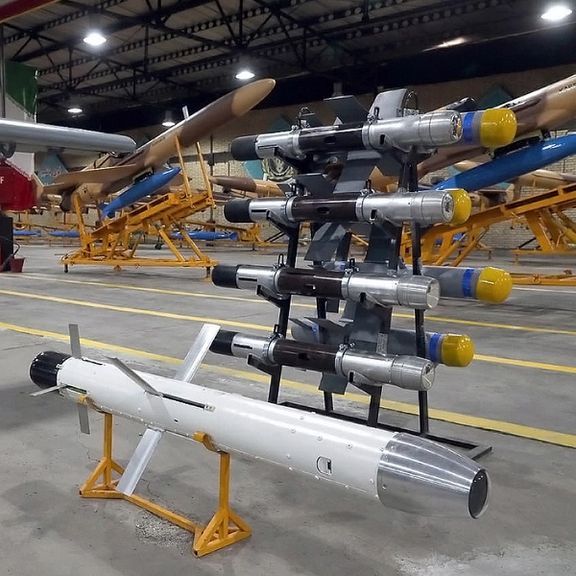
"I think that Iran regime and also Hezbollah understood that they have a limit," said Sabti.
He said Iran's government and Hezbollah leaders wouldn't also want to risk losing wealth and power amassed over the years.
Hezbollah, is listed as a terrorist entity in the US and Canada, but has participated in national elections since 1992 and has become a major political presence in Lebanon and would not want to jeopardize its political authority in the country.
The Lebanese currency was devalued by more than 98% between January 2023 and March 2024, with an annual inflation rate of 221.3% in 2023, according to the World Bank.
Iran's foreign minister told his Qatari counterpart on Monday that the Islamic Republic will support any ceasefire deal agreed by Hamas.
“We will support any agreement that our friends in the Palestinian resistance and Hamas approve”, Iran’s foreign minister Abbas Araghchi told Qatar’s Foreign Minister and Prime Minister Mohammed bin Abdulrahman Al Thani, according to the Iranian Foreign Ministry.
This could be read as a sign that Iran isn't going to retaliate against Israel, understanding as Sabti pointed out, their so-called limitations. Despite that the US is continuing to boost its military presence in the region in anticipation of a major escalation.
White House national security spokesman John Kirby said on Monday, "We must assume Iran remains postured and prepared to attack Israel." He described Hezbollah's attack on Israel over the weekend as "sizeable."
The preemptive attack doesn't signal a change in Israel's strategy and likely prevented anything big from happening, showing success by acting on intelligence, said Sabti.
A game of political theatre?
Robert Springborg, an academic and Middle East expert, described Israel and Hezbollah's conflict as "political theatre" with "a lot of collateral damage."
"Each side is playing to its own constituency and trying to demonstrate to its enemy that it has potential, which it can escalate at any time. They've been engaged in shadowboxing now, basically since October 7th of last year. This is yet another round of that. Neither side believes that they could triumph without huge cost to themselves," said Springborg, an adjunct professor at Simon Fraser University [SFU], and fellow at the Italian Institute of International Affairs.
He believes that full-blown war was never a real option on the table for either party, saying that the regional actors are playing a "role" and can't take major risks.
Springborg pointed to Iran's first-ever direct attack on Israel in April, with an unprecedented number of ballistic missiles fired in a single military operation. The retaliation came nearly two weeks after Israel's attack on an Iranian consulate in Syria, which killed two top Iranian generals.
While on one hand Iran's move opened up the prospect of further escalation, it also involved extensive advance warning to Israeli air defenses. That ultimately allowed enough time for the majority of the drones and missiles to be intercepted before reaching their targets. He saw that as part of the political theatre.
"I don't think a bigger regional war was ever on the cards," he said.
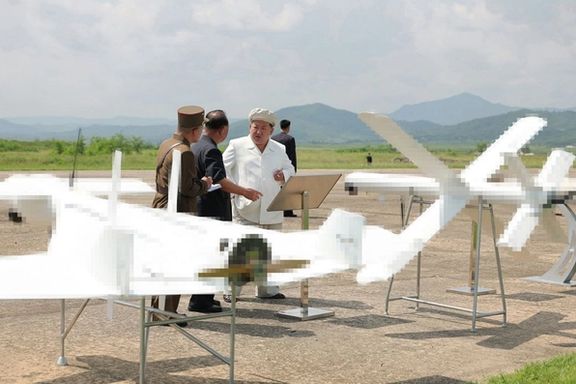
North Korea has unveiled a new ‘suicide’ drone that bears a striking resemblance to notorious Iranian drones “Shahed” which Russia have been using to attack Ukraine.
The new unmanned aerial vehicle (UAV) was unveiled in a military test overseen by North Korea's leader Kim Jong Un. The images broadcast by the North Korean state channel are blurred but experts say there's enough to see the resemblance to the Iran-made Shahed and the Russia-made Lancet-3.
The relationship between the three countries has deepened since the start of Russia’s invasion of Ukraine. Both Iran and North Korea are accused of helping the Russian war efforts by sending weapons, including missiles and drones.
“We understand that some gifts [drones] were given in an exchange between North Korea and Russia in the past,” a spokesperson for South Korea's joint chiefs of staff said Monday when asked about the similarities. “We need to analyze various measures to see if those have improved performance.”
South Korea may be most concerned about North Korea’s military advancements. But the United States would also watch carefully for such signs of close cooperation between Russia, Iran and North Korea.
Iran has invested heavily in its missile and drone program, testing several iterations of its flagship drone, Shahed, which has been used by Russia to attack Ukraine, and was used by Iran to attack Israel in April.
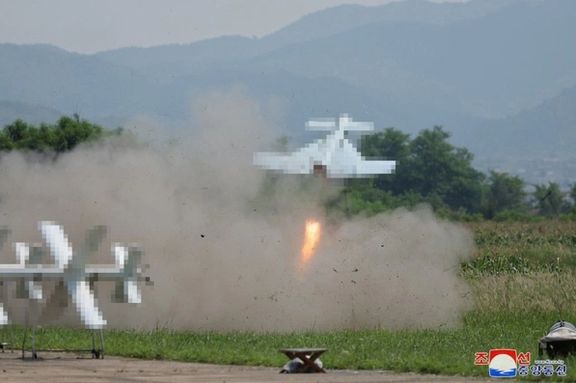
The North Korean ‘suicide’ drone tested on Monday “can fly over 1,000 km,” a South Korean scientist told Agence France-Presse. “They are demonstrating their capacity to strike targets at both tactical and strategic levels.”
The expanding drone fleet of nuclear-armed North Korea will “be deployed within various striking ranges to target any enemy on land or at sea," the North Korean official news agency (KCNA) claimed following the test Monday.
Kim was shown smiling at the drones’ reported effectiveness. He called for “more suicide drones” to be made, according to KCNA.
In 2022, North Korea sent drones across the border that the South Korean military failed to shoot down.
Suicide (or kamikaze) drones are UAVs carrying explosives that are guided remotely to crash into targets, effectively acting as guided missiles.

Iran will support any ceasefire deal agreed by Hamas, the country’s foreign minister told his Qatari counterpart Monday, as diplomatic efforts to free the hostages and bring an end to the Israeli onslaught on Gaza continue without tangible progress.
The ceasefire talks were halted after Hamas leader Ismail Haniyeh was assassinated in Tehran. Iran vowed to "avenge" his blood but has so far held back, partly because of US pressures and also because it doesn’t want to “jeopardize” ongoing negotiations.
“We will support any agreement that our friends in the Palestinian resistance and Hamas approve”, Iran’s foreign minister Abbas Araghchi told Qatar’s Foreign Minister and Prime Minister Mohammed bin Abdulrahman Al Thani, according to the Iranian Foreign Ministry.
Qatar has been playing a key role in the ceasefire talks and Al Thani has traveled to Tehran to inform the Iranian government of the latest developments and efforts towards a ceasefire deal –led by his country alongside Egypt and the US.
The Qatari prime minister also met Iran’s president Masoud Pezeshkian on Monday, stressing the need to exert diplomatic pressure on Israel and to advance the Palestinian cause. He is the first senior foreign official to visit Iran and meet president Pezeshkian and his top diplomat, Araghchi.
“The two sides affirmed the importance of ending the occupation forces' crimes against Palestinians, the war on the Gaza Strip, and the terrorism practiced by settlers in the West Bank, to spare the region the risks of escalation,” according to a summary of Al Thani’s meeting with Iran’s foreign minister.
Arab countries are most worried that the Iranian-Israeli tensions would lead to an all-out regional war. Iran has so far refrained from its promised retaliatory attack against Israel, while repeating the claim that it has not abandoned the plan to take revenge for the Haniyeh killing.
“Taking revenge for this criminal act, whether by the axis of resistance, or by the Islamic Republic of Iran, is certain,” Major General Mohammad Bagheri said Monday. “Members of the axis of resistance, each based on their capabilities and considerations, will carry out their revenge, some of which we witnessed yesterday,” he added, referring to the attacks on Israel by Hezbollah during the weekend.
Bagheri’s remarks can be read as a sign that Iran could opt out of an attack against Israel from its soil and limit its response to ‘proxy’ operations by Hezbollah and other armed groups in the region. Still, the US is continuing to boost its military presence in the region in anticipation of a major escalation.
On Monday, the Pentagon confirmed that the US thinks the risk of an Iran-led attack against Israel persists. “I would point you to some of the public comments that have been made by Iranian leaders and others,” Pentagon spokesperson Air Force Major General Patrick Ryder told reporters. “We continue to assess that there is a threat of attack.”
Later in the day, White House national security spokesman John Kirby said, "We must assume Iran remains postured and prepared to attack Israel. He described Hezbollah's attack on Israel over the weekend as "sizeable" and said Washington was continuing to maintain a robust force posture in the region.
US Defense Secretary Lloyd Austin has directed two aircraft carrier strike groups to remain in the Middle East, bolstering the US military presence amid Iran-Israel tensions, the Pentagon announced on Sunday.
